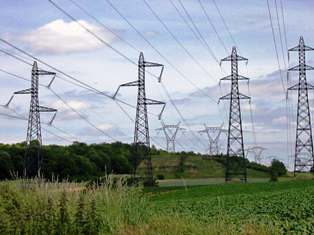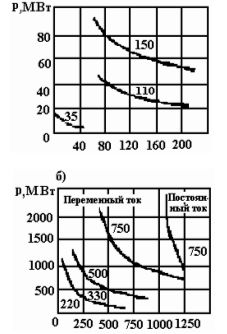Areas of application of networks of different types and voltages
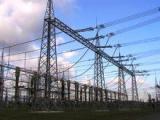 Electric networks are designed for the transmission and distribution of electrical energy from sources to electrical receivers. They allow you to transfer large amounts of energy over long distances with low losses, which is one of the main advantages of electrical energy compared to other types of energy.
Electric networks are designed for the transmission and distribution of electrical energy from sources to electrical receivers. They allow you to transfer large amounts of energy over long distances with low losses, which is one of the main advantages of electrical energy compared to other types of energy.
Power networks are an integral part of power systems and installations for all purposes in industry and agriculture.
The initial transmission of electrical energy was done with direct current. The first experiments, which are not yet of practical importance, date from 1873 — 1874 (French engineer Fontaine (1873 — 1 km) and Russian military engineer Pirotsky (1874 — 1 km).
The study of the basic laws in the transmission of electricity began in France and in Russia simultaneously and independently (M. Depré — 1880 and D. A. Lachinov — 1880). YES.Lachynov in the magazine "Electricity" published an article "Electromechanical work", where he theoretically examines the relationship between the main parameters of the power line and proposes to increase efficiency. increase in tension; 2 kV is transmitted over a distance of 57 km (Miesbach — Munich).
In 1889 M.O. Dolivo-Dobrovolski created a connected three-phase system, invented a three-phase generator and an asynchronous motor. In 1891 for the first time in the world three-phase alternating current transmission was carried out over a distance of 170 km. Thus, the main problem of the 19th century was solved — the centralized production of electricity and its transmission over long distances.
From 1896 to 1914, the industrial introduction of long-distance power lines, an increase in their parameters, the specialization of networks, the creation of branched local networks, the emergence of power systems:
1896 - in Russia, the first 10 kV three-phase transmission line with a length of 13 km and a power of 1000 kW appeared at the Pavlovsk mine in Siberia.
1900 — a power system connecting two stations was created in Baku: for 36.5 and 11 thousand KW cable transmission line -20 kV.
1914 — a 76-km long 12,000 kW power line from the Elektroperachaya regional power plant to Moscow was put into operation.
It should be noted that despite the fact that Russia was an advanced country in developing the principles and methods of energy transmission and distribution, by 1913 it had only 325 km of 3-35 kV networks and was ranked 15th in in terms of electricity production, it is inferior even to Switzerland...
1920 -1940— the stage of rapid quantitative development, ensuring the industrialization of the country and the construction of an industrial base, as well as the practical use of electricity and electrical networks.
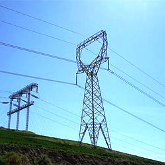
1922 — the first 110 kV transmission line in Russia with a length of 120 km (Kashira — Moscow) was put into operation.
1932 — the beginning of operation of the 154 kV network of the Dnieper Energy System.
1933 - the first power line - 229 kV Leningrad - Svir was built.
1945 - to date - development of voltages up to 1 million and more B, expansion of electric power systems, creation of interconnections, widespread distribution of electricity in military facilities:
1950 — an experimental - industrial power line - 200 kV DC (Kashira - Moscow) was built.
1956 — the world's first 400 kV transmission line from the Volga HPP to Moscow was put into operation.
1961 — the world's first 500 kV transmission line (Volga HPP — Moscow) connects the power systems of the Center, the Middle and Lower Volga and the Urals.
1962 — An 800 kV power line for direct current (Volgogradenergo - Donbass) was put into operation.
1967— a transmission line -750 kV Konakovo — Moscow with a capacity of up to 1250 MW was put into operation, and in the 1970s a transmission line 750 kV (Konakovo — Leningrad) was built.
From the first years, the development of the electric power industry followed the path of creating electric power systems, which included power plants connected by high-voltage transmission lines for parallel operation. The construction of a 500 kV transmission line from the Volga HPP to Moscow and the Urals marked the beginning of the formation of the Unified Energy System of the European part of Russia (EEES).
The length of power lines is constantly increasing and higher voltages are being developed than the 1125 kV AC and 1500 kV DC classes. By the beginning of the 1980s, the total length of the networks in the country exceeded 4 million km.
Currently, in electrical installations with a voltage of up to 1 kV, networks with a voltage of 380/220 V are most widely used. With this voltage, it is possible to transmit power up to 100 kW over a distance of 200 m.
Voltage 660/380 V is used in supply networks of objects with powerful receivers. At this voltage, the transmitted power is 200 ... 300 kW at a distance of up to 250 m.
Voltages of 6 and 10 kV are widely used in supply overhead and cable lines at most sites with a power of up to 1000 kW with a line length of up to 15 km.
The nominal voltage of 20 kV has a limited distribution (only the networks of the Pskov region).
Voltages of 35 ... 220 kV are mainly used in overhead lines supplying objects from the state power system with a power of more than 1000 kW and a line length of more than 15 km. They enable power transmission of 10 … 150 MW respectively at distances of 200 … 500 km.Voltages higher than 220 kV are not yet used in networks of military installations.
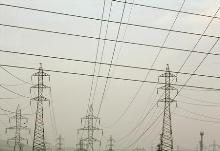
In the field of construction and operation of ultra-high and ultra-high voltage lines, our country has been in first place in the world for many years.
Included are the Ekibastuz-Center 1500 kV DC power lines with a length of 2414 km and a 1150 kV AC power line, Siberia-Kazakhstan-Urals with a length of 2700 km operation.
On the territory of the Russian Federation, two systems with high and ultra-high voltage are formed: 110 ... 330 ... 750 kV for the western zone of the country and 110 ... 220 ... 500 kV with further development of the last system with a voltage of 750 and 1150 kV for the central zone of the country and Siberia.
The economic range of nominal voltages depending on the length of the line and the active power transmitted through it is shown in the figure.
Economic ranges of nominal voltages a) for voltages 20 ... 150 kV; b) for voltages 220 ... 750 kV.
However, currently, due to the fact that the Republic of Kazakhstan has become an independent state, part of the intersystem communication, namely Central Asia-Siberia, is interrupted and energy is not transmitted through this section of the network.
I. I. Meshteryakov

